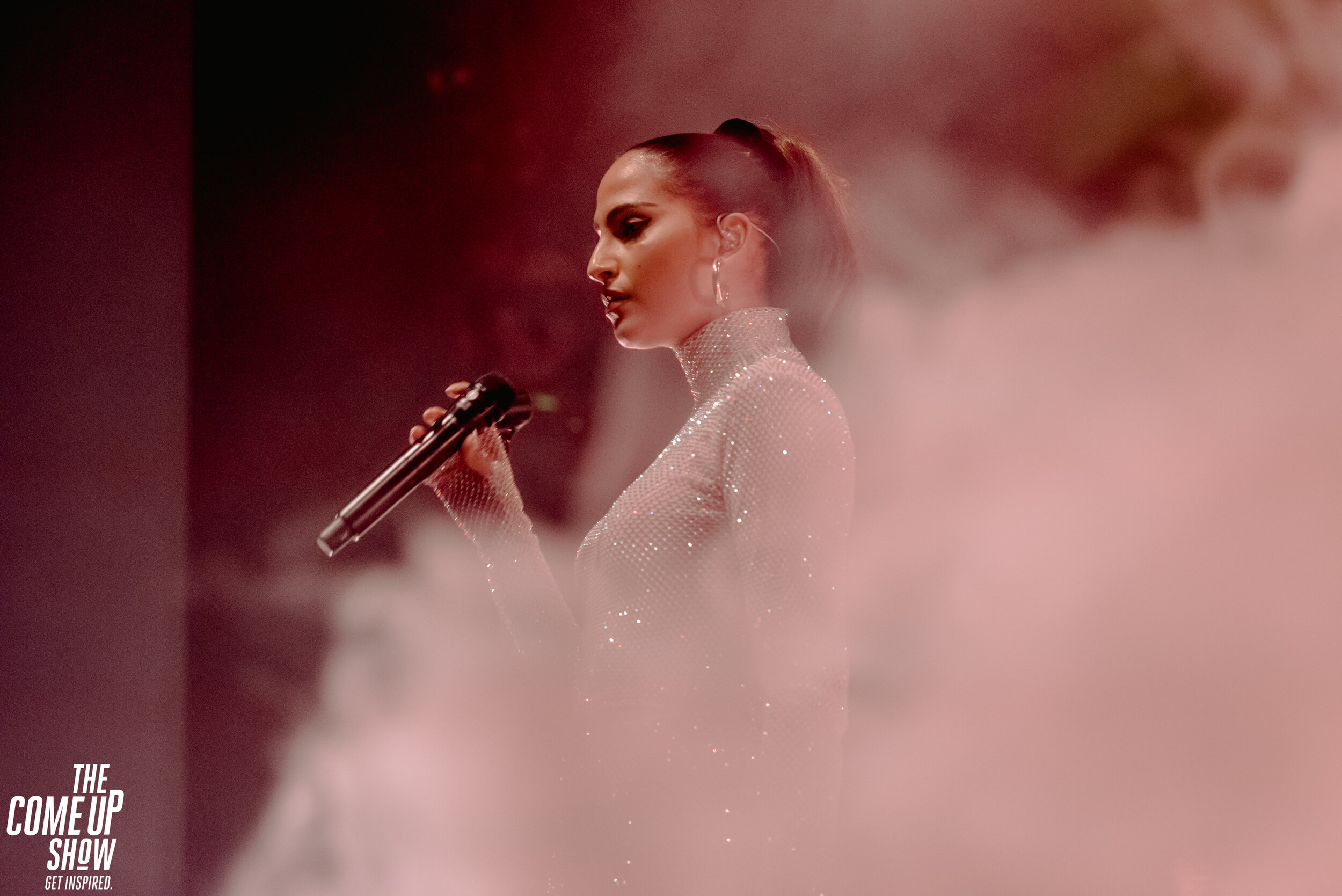Beyond The Sounds: The comparison of Snoh Aalegra to Sade may be valid, but it’s also disruptive
The negativity that stemmed from the comparison of Snoh Aalegra to Sade on Twitter in July 2021 highlights a lack of understanding of the relationship between inspiration and artistic individuality.
Photo by The Come Up Show on Flickr
On a largely aesthetic basis, comparisons have long been drawn between the iconic Quiet Storm singer-songwriter Sade and Prince-protégé Snoh Aalegra, who recently released her third album Temporary Highs In The Violet Skies on July 9. Given the similarity in skin tone and stylistic elegance, and the fact that a sleek ponytail is the signature of both artists, it’s not difficult to understand why an image of Snoh Aalegra evokes a connection to Sade in the minds of some people. For instance, despite the slight difference in expression and hand placement, there is somewhat of a resemblance between the portrait of a serene, closed-eyed Sade and that of Snoh Aalegra reflecting on her “truth” and the realities of love on the Ugh, Those Feels Again album cover.
But, although there's more resistance towards this aspect of the comparison, I would say there is some truth in the argument that Snoh Aalegra's likeness to Sade is not only visual, but sonic too. This is because, while Sade's tone—velvety and with a slight rasp—may go unmatched, listeners should be able to recognise that a certain melancholy, present in what Pitchfork characterises as the “liquified soul and jazz into new-school pop” sound of her eponymous band, also features in the "cinematic soul" style of Snoh Aalegra, the name she has assigned to her introspective mix of R&B and soul. For example, you can identify this shared feeling of sadness in the atmospheres created by the synths in the lead single “LOST YOU” off of Snoh Aalegra’s new album and the Grammy Award-winning track “No Ordinary Love” by Sade. Furthermore, since Snoh Aalegra cites Sade as one of her musical influences, whilst also maintaining a timeless sense of artistic originality, this comparison is clearly valid, albeit in the context of inspiration, not imitation.
However, when one Twitter user characterised Snoh Aalegra as "our Sade" on July 15, the intensity of the online debate that ensued illustrated the reason why such a comparison can be disruptive. Although she handled the situation well by responding with two respectfully-word tweets, rightly stating that “Sade is every generation[’s] Sade” and describing the controversial tweet as “unnecessary”, Snoh Aalegra obviously couldn’t erase or put a complete end to what makes the comparison of these two women problematic.
Firstly, naming Snoh Aalegra "this generation’s Sade” is wrong because the notion disregards the fact that we still have Sade with us. With long periods of silence between projects forming part of her legacy, and the band releasing a box set of six remastered albums entitled This Far in October 2020, the belief that Sade will emerge from a season of silence once again is not unjustified. Also, since this framing falsely suggests that in essence Snoh Aalegra’s artistry imitates that of Sade, it can result in the comparison hindering a proper exploration of the former’s body of work in particular. While many listeners positively refer to Sade in comments on Snoh Aalegra’s music and image, others use the comparison as a premise for criticism, even though Snoh Aalegra’s output is not the product of one sole influence and contains details that don’t relate to Sade at all. Therefore, whether positive or negative, the focus on Snoh Aalegra’s proximity to Sade can interfere with how people digest the music, since it can divert attention away from other noteworthy elements of her approach to the art, such as the vulnerability expressed through her lyricism.
Ultimately, all of this comes down to a conversation about how audiences engage with artists once they've identified a relationship between the inspiration and the inspired. While every creative is influenced by someone or something, how this becomes apparent depends on how they channel the inspiration and, as in Snoh Aalegra's case, other factors outside of one’s control. This is because it is safe to say that her natural appearance coupled with certain stylistic choices (e.g wearing hoop earrings and a long, low braided ponytail) magnifies and/or affirms the connection that some people make between her and Sade, despite the reality being that different sources of inspiration exist and vary in how they influence her.
Discussions surrounding Sade’s (perceived) influence on Snoh Aalegra can become somewhat disruptive due to a lack of nuance and the confusion of inspiration with imitation leading to unwarranted criticism. But, if audiences acknowledge the fact that artistic individuality can coexist with inspiration, given the example of Snoh Aalegra, maybe more people will be able to appreciate the creativity of the inspired as well as the inspiration.

